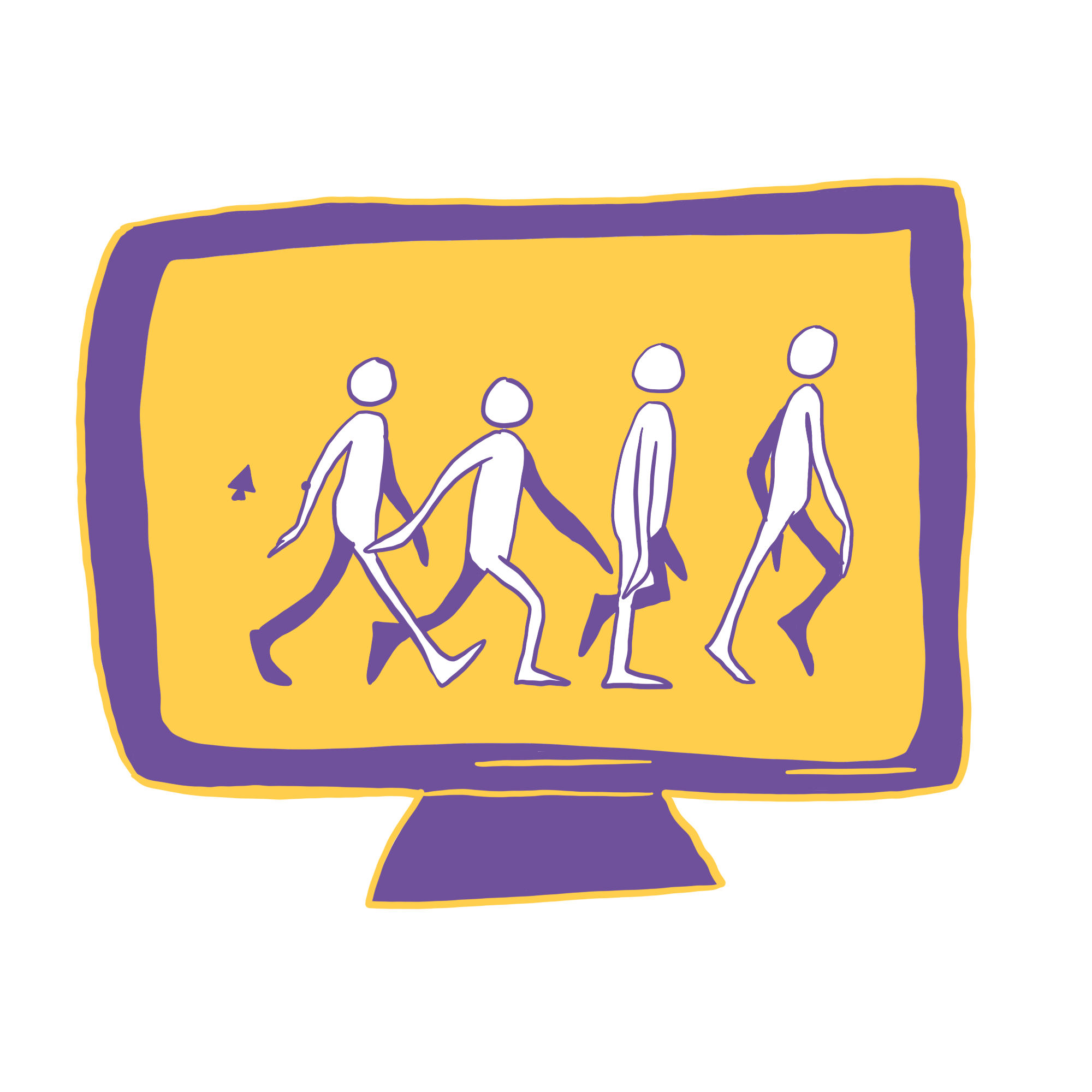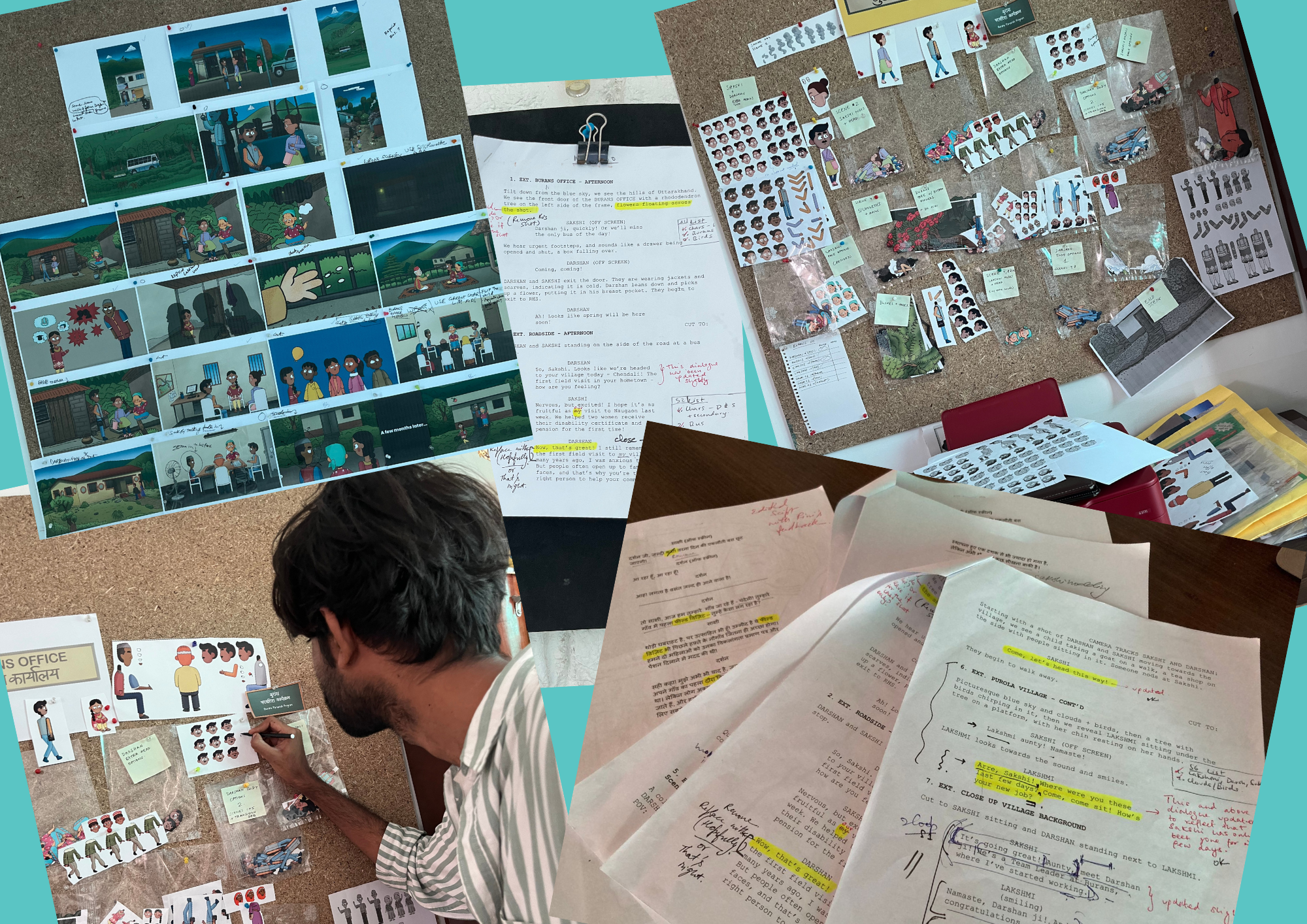Burans
Stop Motion Animation
About Burans:
Burans is an NGO that works with disadvantaged communities in Uttarakhand to promote mental health and community well-being. Burans focuses on destigmatising the perceptions around mental illness, and working closely with local governments and existing resources to address the root causes of mental health issues.
Working with Burans is Ember Mental Health, who collaborate with locally-led mental health initiatives from across the globe and help them achieve their goals. As part of their work alongside Burans, they envisioned an animated video that explains the unique vision and scope of Burans’ efforts in Uttarakhand.
Project Brief:
Conversations around mental health are sensitive, often difficult matters, and Ember wanted to create a video that serves as an introduction to Burans in a way that navigates their work with care and consideration. The video envisaged was one that incorporated storytelling elements to highlight various aspects of Burans’ programmes, including their youth initiative – Nae Disha and their positive parenting effort – Parwarish, among others. In this way, the video could be showcased both to investors and people who might be interested in seeking Burans’ help.
It was important to provide actual, realistic insights into Burans’ process and the recovery journey a community member might take. This involves covering the Burans team’s extensive travels across Uttarakhand, as well as the sociocultural context of rural Uttarakhand where there are plenty of taboos associated with mental health. Lastly, depicting the gorgeous setting of Uttarakhand itself – for instance, the lush greenery of the remote villages where Burans works – was a key part of making a unique video that stands out.
Our Approach:
We began by reading about Burans’ work and research, and conducting thorough interviews with Burans team members about their process. We focused on the journeys of various community members whom Burans had helped, as well as the team’s own learnings, processes, and ideas. We then narrowed our material down to the key themes we wanted to capture. Namely, the remoteness of the villages that Burans reach, as well as realistic and atmospheric renderings of what these areas are like. Additionally, accurately depicting not only the issues a person might face in this village, but also how Burans works by going door-to-door, the nature of their conversations, and how they connect people to local governments, health centres, and other organisations.

It was crucial to us to give the film a distinctive, textural look that complimented the mountainous terrain, sprawling landscapes, and incredible visual depth of Uttarakhand. We therefore decided to shoot the film as a 2D paper stop-motion animated film. This provides a playful, stylised approach that serves as a storytelling platform, allowing us to deal with the sensitive issue of mental health in an accessible way.
Scripting:
To root our film within the context of the area, we chose to revolve our film around one family in Chandeli, a village in Purola, Yamuna Valley. Based on our calls with the team, we created the character of Anjali, a girl in her late teens who hopes to attend college despite her father’s insistence on her getting married. This conflict, combined with the family’s financial issues, causes different forms of mental distress for Anjali and her parents.
In order to effectively explain Burans’ process, we created a narrative that explores the entire journey of the Burans team helping Anjali and her family. By framing one of our characters, Sakshi, as a team member who is explaining what Burans does to Lakshmi – Anjali’s mother, the viewer learns about Burans alongside Lakshmi. In this way, the audience experiences each stage of Burans’ process. From travelling to the village, to initiating a conversation, all the way through the recovery process, which includes information about Burans’ different programs.
Character Design:
To ensure that the characters’ clothing, patterns, and design looked authentic, we designed them based on photos shared by the Burans team in Uttarakhand. We noticed that women traditionally wore brightly coloured, patterned kurtas, often accompanied by headscarves. Men, particularly in the colder seasons, wore trousers and jackets with topis.

We cycled through various iterations of character designs before settling on a look that was simultaneously authentic, fit with our bright, lush green backgrounds, and was suitable to puppet for stop-motion animation.
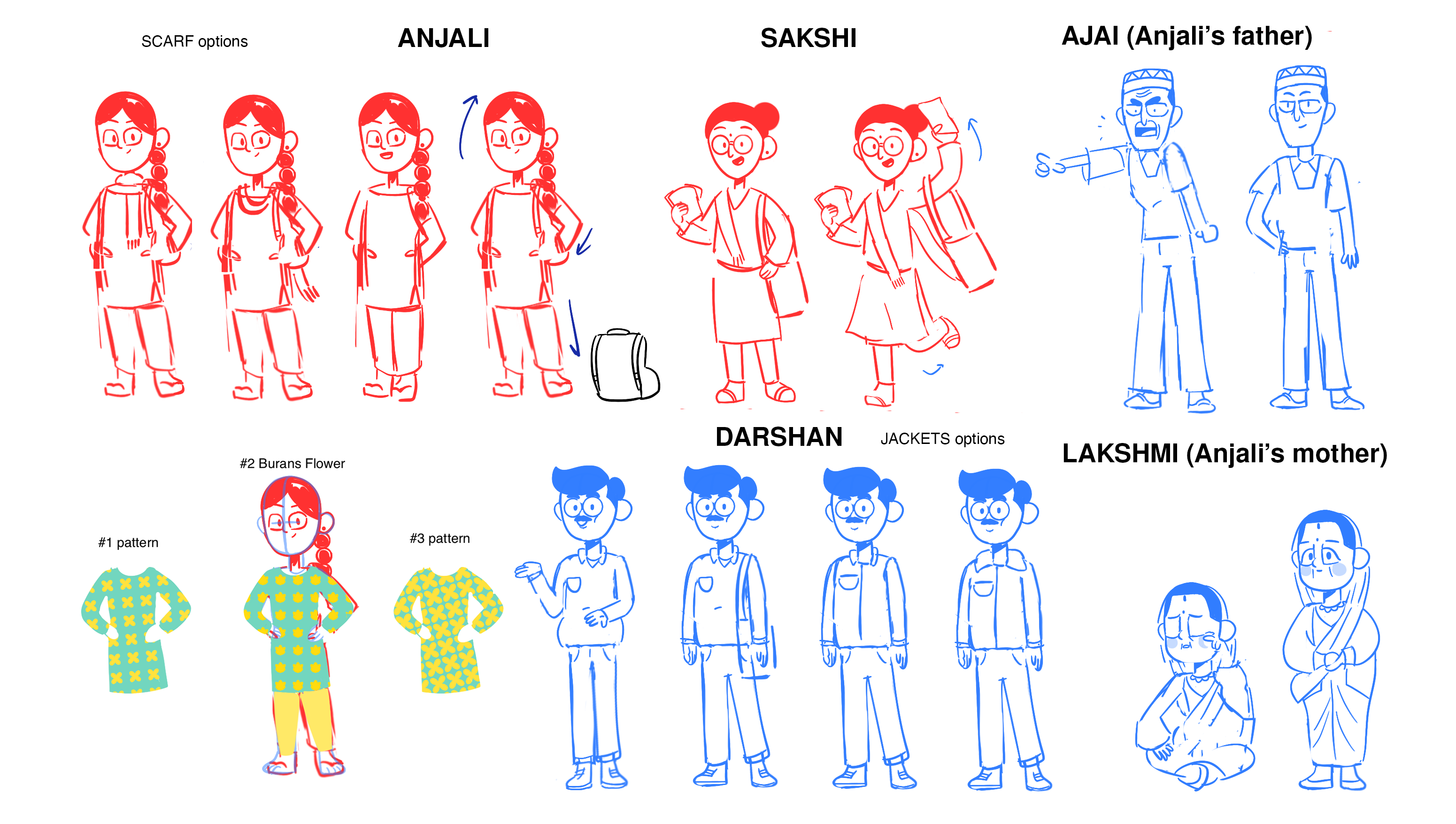
We also strived to incorporate each character’s distinct personality in their expressions, posture, and look. Anjali, for example, was confident, energetic, with a slight rebellious touch. Lakshmi, Anjali’s mother, had a warm personality, but was simultaneously tinged with worry due to the argument between her daughter and husband.

Sakshi and Darshan – the Burans team members, were slightly older and needed to look welcoming and kind.


Background Design:
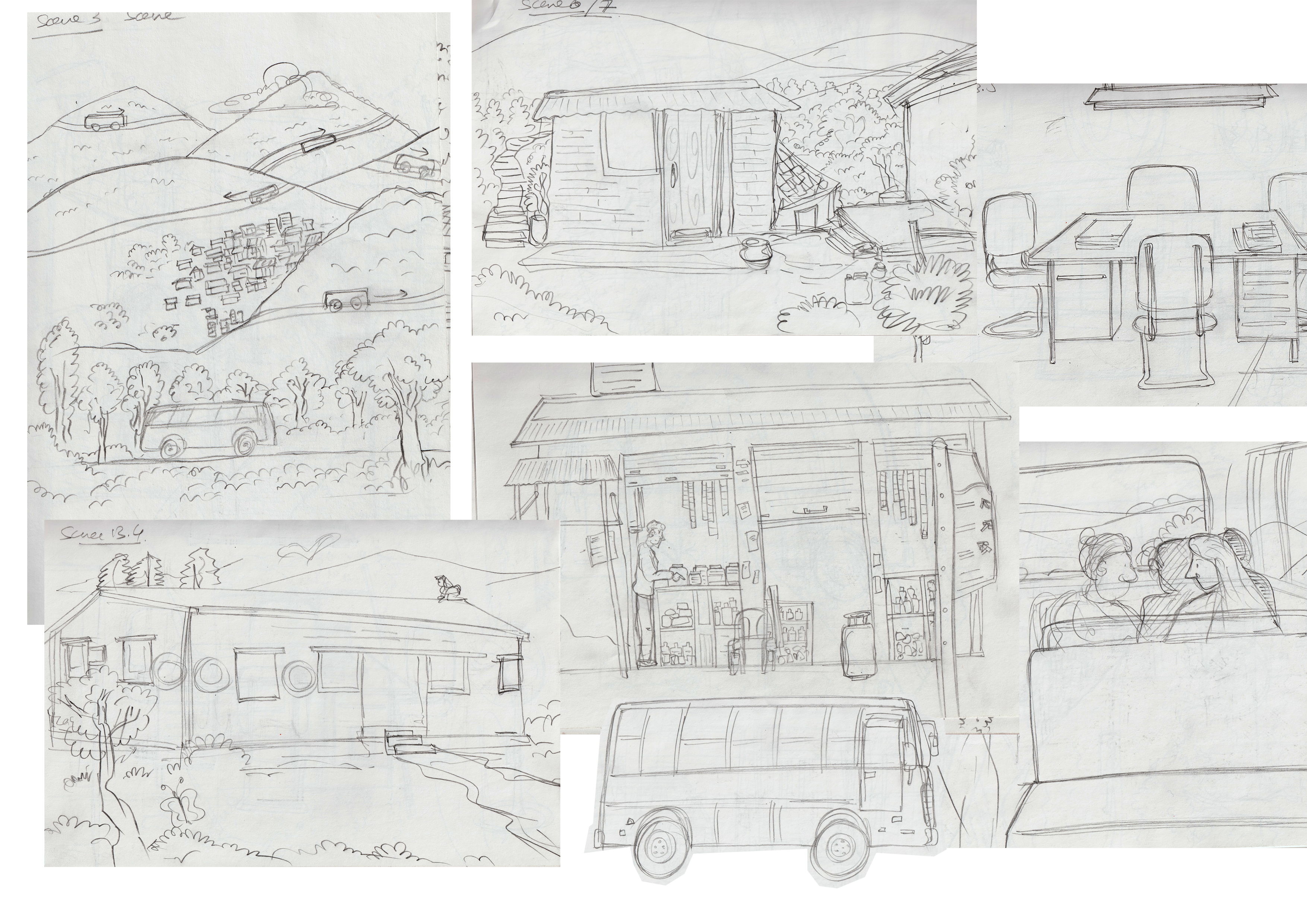
It was important to create detailed, layered backgrounds that captured the vast expanses of the Uttarakhand mountains, as well as details such as the houses, pathways, and shops that invoke a genuine feeling of village life in the hills.

We took careful notes of things like the material the houses were built with – often with wood, layered stones, or cement, with slanted roofs made of tin or tiled with slate stones.

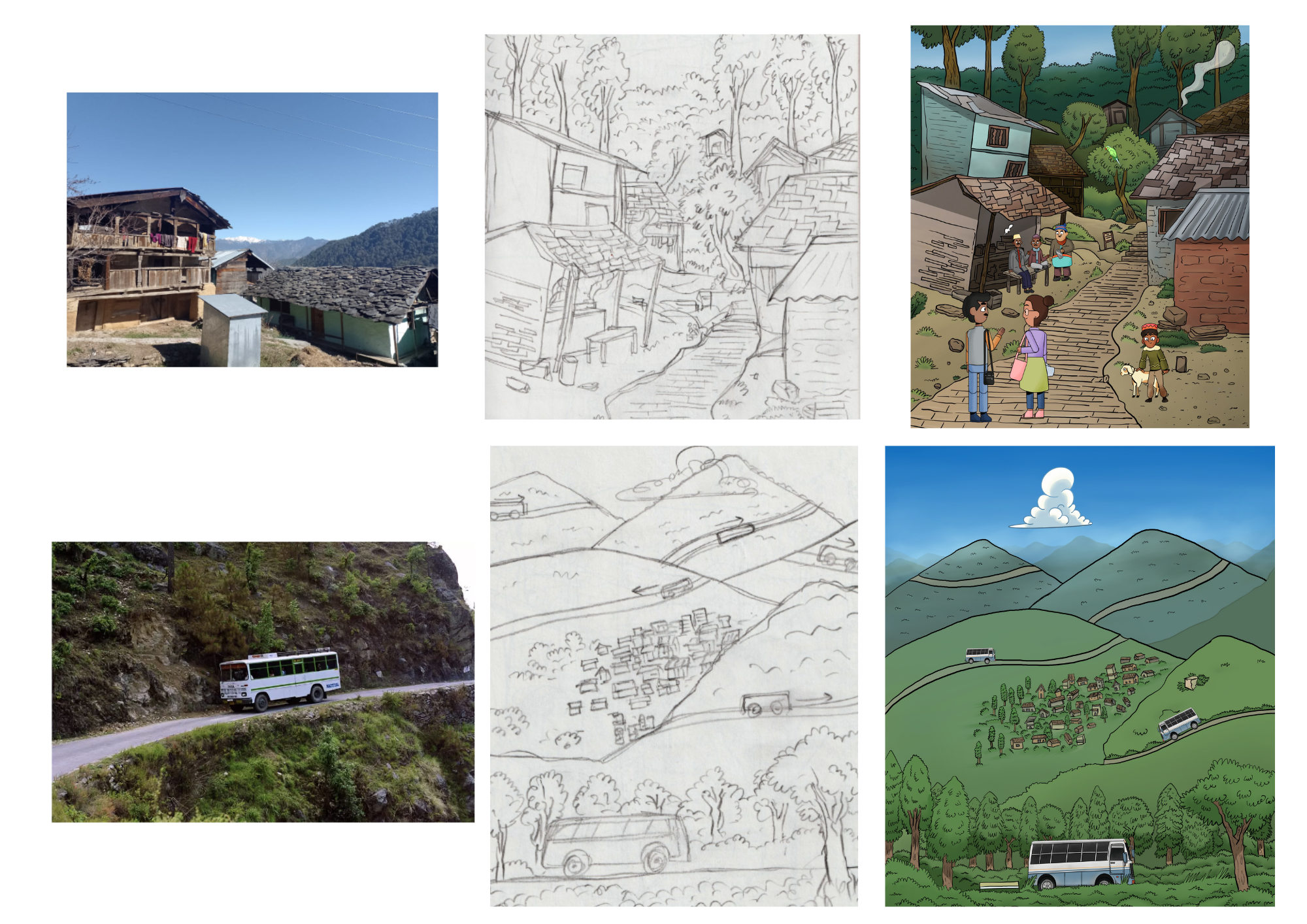
To render some of the distant mountains, we painted, crumpled, and cut wide sheets of paper, giving us natural shadows and a more natural, earthy, folktale-esque look for our backgrounds.
Storyboard:
While finalising our character and background designs, we also refined our script, and layed down the storyboard to act as the final planning before we began our shoot. During the storyboarding process, we began refining aspects such as pacing and transitions of scenes, creating scenes that were either too sparse or too crowded, among others. Once our storyboard was finalised, which gave us the first real “feel” of what our film would eventually look like, we were ready to make the final preparations for the shoot.
Production:
Stop-motion animation is a delicate process that requires plenty of planning, experimentation, and testing. Our testing process involved taking trial shots, and resizing, recutting, and recreating various elements of a scene to better fit the look we were going for.
Using a layered glass-and-wood rig we built in-house, we shot the video over the span of two weeks. To achieve more dynamic, interesting lighting, we experimented with creating different moods and ambience by using various RGB lights and LED bulbs, sometimes filtering them through butter paper or coloured plastic sheets. Further, we also played with the heights of our glass layers to create more stylised and dramatic shadows.

Despite the meticulous planning necessary for any stop-motion shoot, there are still plenty of spontaneous decisions required to create an effective film. Certain things were only discovered once we actually began shooting, such as how certain characters had to be resized (and therefore reprinted and recut), or how some backgrounds had to be enlarged to emphasise depth and distance. Other creative decisions included playing around with the glass layers to tuck objects behind others, for instance, sliding the bus behind and then over trees to give the impression of it weaving in and out of the foliage.
Voiceover and Sound Design:
The look of the video is only one part of providing an immersive feeling of the green slopes of Uttarakhand. We wanted to ensure that our video provided a more engaging, rounded experience by including ambient sounds such as local songs playing on the bus radio, the chirping of native birds, the rumble of passing vehicles, whistling winds, and more. We focused our voiceover on sounding conversational to further contribute to the narrative atmosphere we wanted to create for this video.
Editing, Translation and Final Notes:
The editing process involved syncing the mouth movements with the dialogue, colour grading, subtitling, as well as going into certain scenes frame-by-frame to remove blemishes and fingerprints. Additionally, we chose to translate our film and create a Hindi version, where certain turns of phrases and subtle expressions were changed to better reflect the local dialect and inflections. In this way, the film was accessible to the Burans team and the people they interact with in the course of their work. It was incredibly rewarding to receive positive feedback from the Burans team about the film! After incorporating a few changes they suggested about additional information we could provide, we finalised both the English and Hindi versions of the film – ready to be showcased at Burans event celebrating 10 years of helping disadvantaged communities across Uttarakhand!
The final videos are available to view on Burans’ YouTube Channel. To watch them now, click here for the English version, or click here for the Hindi version!
Credits:
Creative Direction – Shikhant Sablania
Script – Arya Rao and Shikhant Sablania
Cinematography and Animation – Shivi Bhatnagar
Character Design – Denise Monachella
Background Design – Shikhant Sablania
Background Colours – Amit Makwana
Editing & Color Correction – Shivi Bhatnagar
Animation Assistance – Ananya Gupta, Arya Rao
Sound Design – Dhruv Joshi
Animatic Design – Rishika Tatakuntla
Voice Artists (in order of appearance):
Sakshi – Payal Thakur
Darshan (English version) – Sahil Massey
Darshan (Hindi version) – Piyush Agarwal
Lakshmi – Tamanna Balwada
Local Man – Shikhant Sablania
Local Girl 1 – Shivi Bhatnagar
Local Girl 2 – Ananya Gupta
Anjali – Shivi Bhatnagar
Production and Research support by Rini Sinha and June Larrieta (SHM Foundation)
A huge thanks to Kaaren Mathias, Jeet Bahadur, Atul Singh, Sharon Stanly, Samson Rana, Manoj Singh, Prakash Lal, Pooja Baluni and the entire Burans Team for their support, feedback, and assistance throughout the making of this film.
Produced by Choorma Studio
For Ember Mental Health
Hey! We do branding too
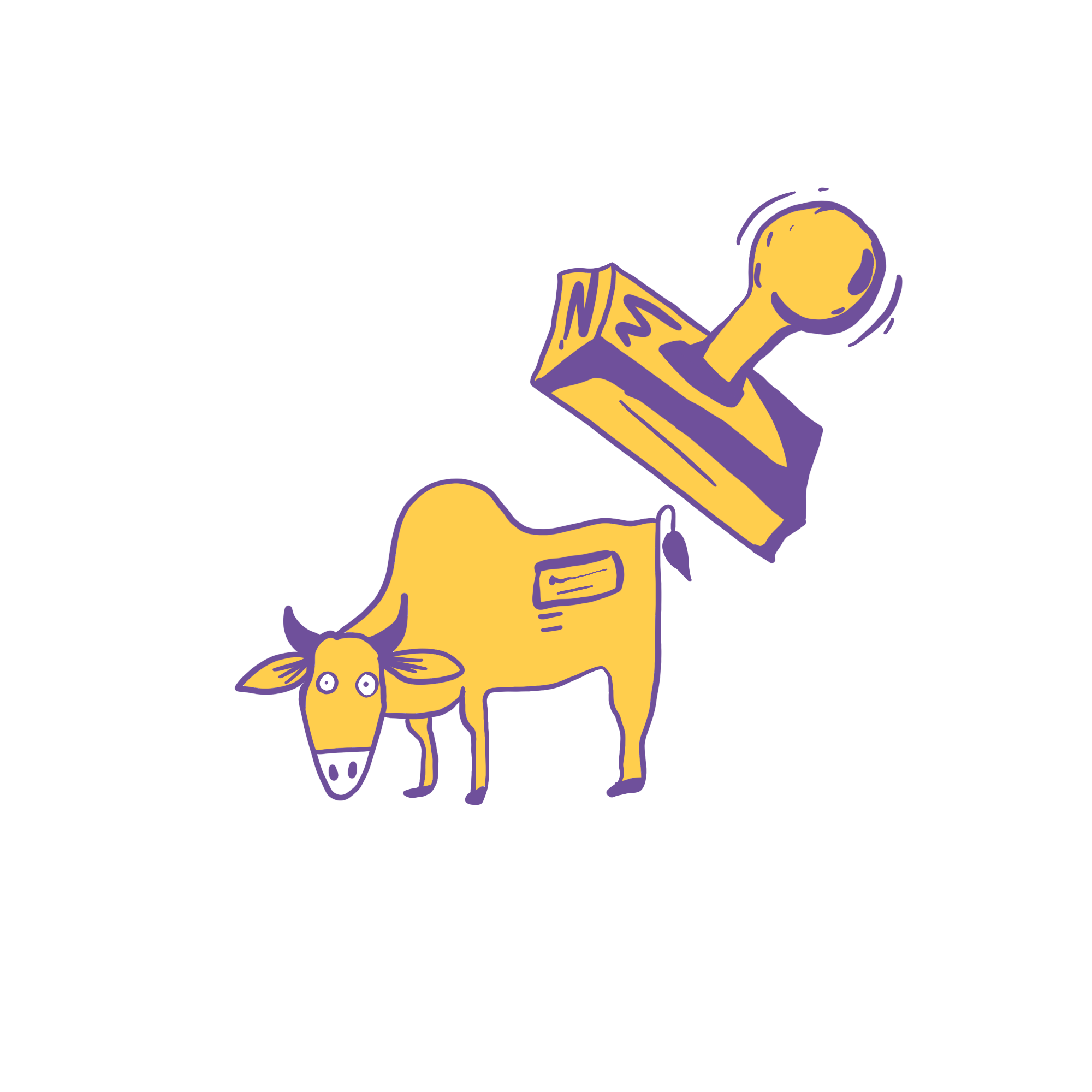
Hey! We make cool animations also.
